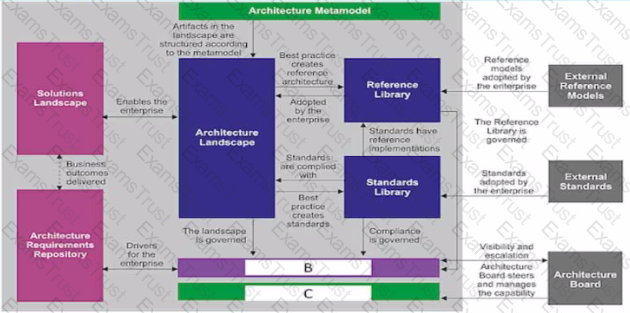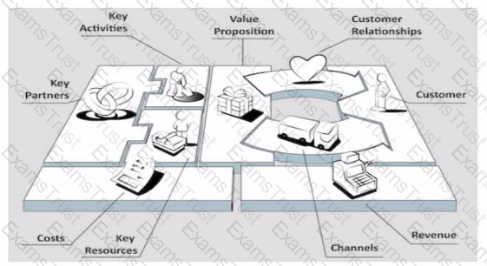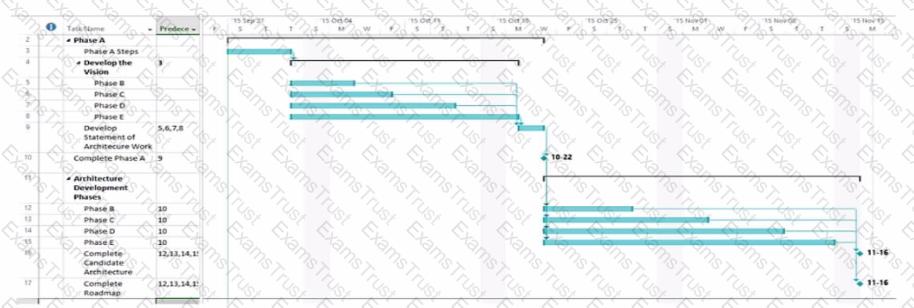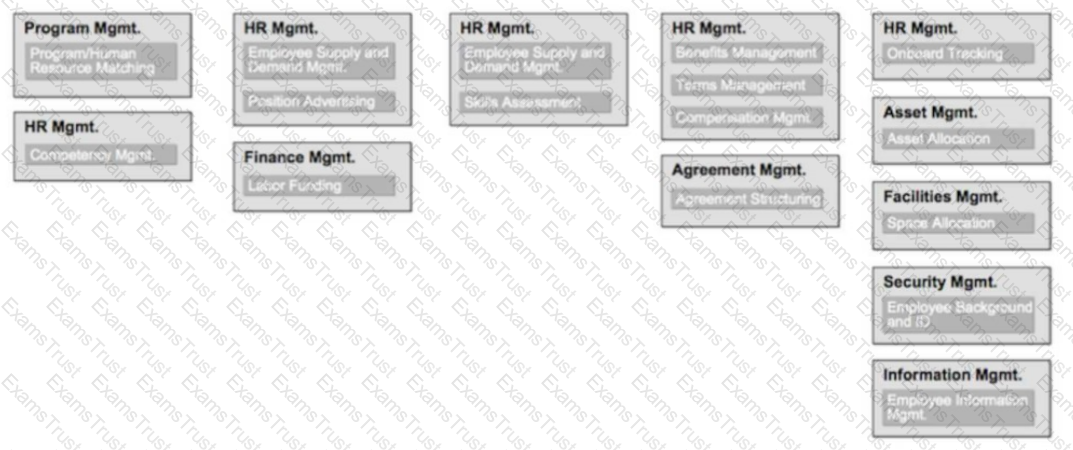Complete the following sentence:
Presenting different ____ and ____ to stakeholders helps architects to extract hidden agendas, principles, and requirements that could impact the final Target Architecture.
Which of the following is an analysis technique which is used to show a range of different perspectives on the same set of business capabilities?
In the diagram, what are the items labelled A, B, and C?

Question: Which ADM Phases match the following purpose descriptions?

What information does the Architecture Requirements Repository within the Architecture Repository hold?
Which of the following is guidance for creating value streams?
In what TOGAF ADM phase should the architect locate existing architecture descriptions to create an information map?
Complete the sentence. The four dimensions used to scope an architecture are:
What process turns a set of business capabilities into a structure that communicates the right amount of detail to different stakeholder groups?
Which of the following best summarizes the purpose of Enterprise Architecture?
Consider the diagram of an architecture development cycle.
Which description matches the phase of the ADM labeled as item 2?
What component of the Architecture Repository is an architectural representation of SBBs supporting the Architecture Landscape?
Consider the following representation of a business model:

Which of the following business models is this an example of?
Which of the following best describes where business scenarios are used in the TOGAF ADM?
Which of the following are used for structuring a business capability map?
What can architects present to stakeholders to extract hidden agendas, principles, and requirements that could impact the final Target Architecture?
What Is presented as striking a balance between positive and negative outcomes resulting from the realization of either opportunities or threats"?
Which of the following is guidance for creating value streams?
Which of the following best describes a TOGAF business scenario?
What are the four architecture domains that the TOGAF standard deals with?
Which statement best describes iteration and the ADM?
Complete the sentence. A key principle of value streams is that value is always defined from the perspective of the_____________
Consider the following chart:

Which important concept for Enterprise Architecture Practitioners does it illustrate?
Which of the following describes how business models are used within the TOGAF standard?
Which of the following best describes a business capability?
Which of the following is a benefit of Value Stream Mapping?
Consider the following output from Phase A:
 What is this an example of?
What is this an example of?
Consider the following example value stream:

What does this show?
Which of the following is a benefit of value streams and value stream mapping?
Consider the following:
You need to analyze a new value stream within the scope of a project.
Which of the following would you use?
Which of the following best describes the relationship between business models and business architecture?
Which of the following best describes the relationship between business models and business architecture?
In what TOGAF ADM phase is the information map linked to other business blueprints?